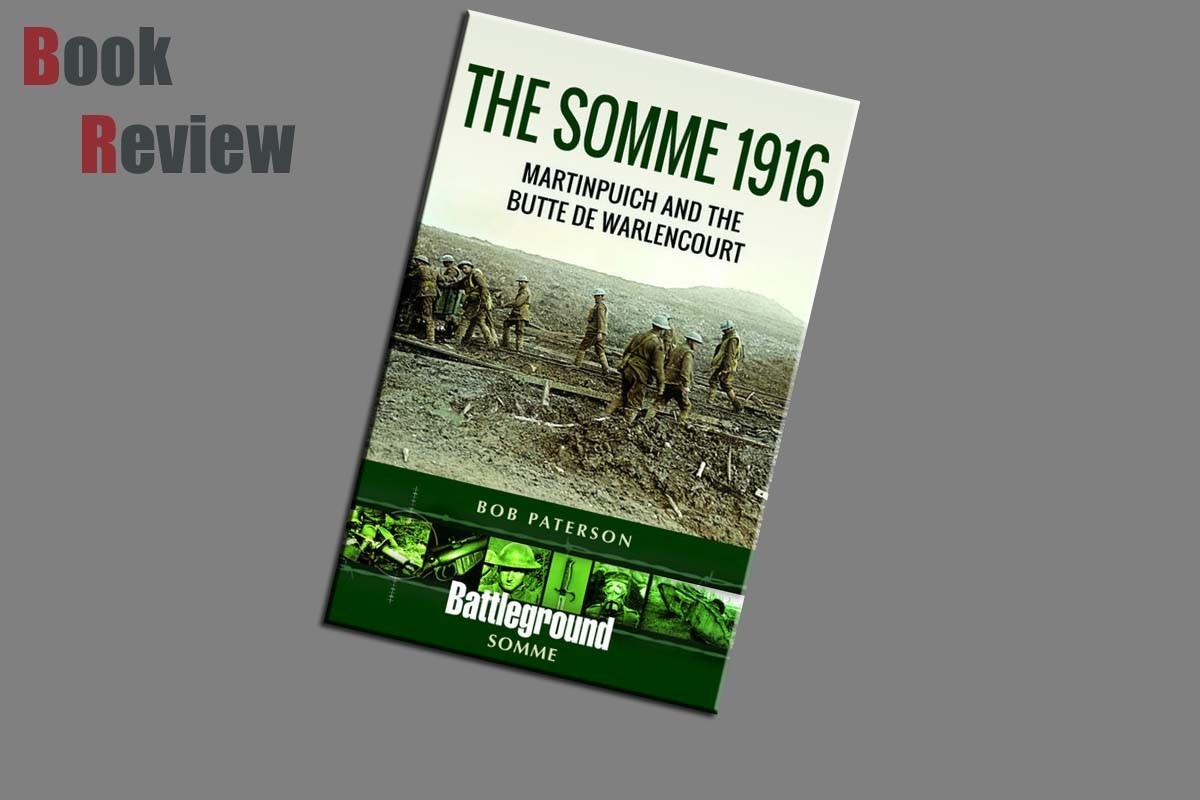
Introduction
The following introduction is taken from the Pen and Sword website:
Much of the popular attention on the Battle of the Somme 1916 is focussed on the first day of the infantry assault, 1st July, when such high hopes were dashed and British casualties ran into the tens of thousands. However, the Somme was a battle that lasted over twenty weeks, running well into the autumn.
This book is concerned with fighting south of the famous Albert-Bapaume road from mid September to the official end of the battle. The coverage includes Martinpuich, the hamlet of Eaucourt l'Abbaye, Le Sars and that strange topographical feature the Butte de Warlencourt.
The action starts with the major British attack of 15 September 1916, which enjoyed some success and which included the first use of tanks. The book takes up the story from the fall of Martinpuich and follows the British as they inched their way north eastwards to Le Sars and Eaucourt l'Abbaye. This was gruelling warfare, fought in fast deteriorating weather conditions and in the face of ever increasing volumes of artillery fire: the mud was almost as much the enemy of both sides as the weight of lead and iron fired at them.
The Butte de Warlencourt has come to have an almost iconic status. This rather insignificant hillock, almost certainly a burial mound of the Romano-Gallic period, marks the point at which the battle officially ceased along the Albert-Bapaume road. For days before the battle ended both sides tussled to secure its possession, numerous limited attacks taking place over devastated, utterly water logged and featureless ground. Indeed it was the 'emptiness' of the area that made the Butte of such significance, a fearsome, solitary landmark standing out against a backdrop of desolation. It was the focus of the fighting in the area for almost six weeks.
As well as the customary walks, essential to an understanding of the confused fighting in the area, there is a long car tour, covering many less visited parts of the battlefield to the east and north of the Butte and which places it firmly in the context of the battle. Charles Carrington, who wrote one of the classic memoirs of the war, was not alone amongst those who fought here when he commented that, 'the Butte de Warlencourt terrified us'.
Review
This offering from Pen and Sword titled the Butte de Warlencourt and authored by Bob Paterson looks at a specific point of the front during the battle of the Somme. The book is designed to be a guide for visiting the battlefield and so gives you a written and to some extent visual guide to a battlefield that cost so many lives on both sides of the battle of the Somme. The book itself is laid out as follows:
List of Maps VI
Series Editors introduction VIII
Introduction XI
Acknowledgements XVIII
Chapter 1 The Somme Battle 1916: September til the battles End
Chapter 2 Mid September Success- Martin Puich is taken
Chapter 3 Early October: Eaucourt I’Abbaye is Taken
Chapter 4 The Advance From Eaucourt I’Abbaye to the capture of Le Sars on 8th October
Chapter 5 The Further Attempts to Capture the Butte de Warlencourt: October and November 1916
A Guide to the Book
Visiting the Battlefields
Walking Tour 1 The Area around the Butte de Warlencourt
Walking Tour 2 Martin Puich and Area
Touring the Area by Vehicle: Behind the German lines
Selected reading and Bibliography
Selected Index
This offering from Pen and Sword can be considered as one of those titles that should be sort out by a person visiting the area of this battlefield, and wishes to have some idea of what the battle was about and what occurred during the Battle of the Somme. Many of the battlefields of WWI can still be visually picked out where they have not been built upon. Shell craters and the like, while now dry and overgrown with grass give you some idea of what the men during the First World War threw at each other. The book is a mixture of written and photographic information, and helps the visitor to pick out some of the features that still exist and at the same time have some knowledge of the men who fought and in many cases died in this location. A number of grave markers are pictured in this title, so give you areas to seek out and should you desire to pay your respects. Also provided in this title are some grid references which enables you to visit very specific areas and locations and if you take a GPS device you can stand on almost the very spot.
With the people who fought in WWI having now all passed away I believe, it is books such as this one that provides you with an insight to very specific aspects of the First World War. The book is not aimed at supporting the war efforts on one side or the other, and instead presents the information in a factual approach that allows you to consider what you are looking at in the location you are in on the day, as supposed to how it looked during the war. It helps you to visualise the sounds and smells as well as the sights that greeted the soldier, some of which were still children themselves.
Conclusion
This book from Pen and Sword written by Bob Paterson is designed for the person visiting the battlefield and enabling you to visit very specific locations. It provides a visual guide from then til now and so enables you to appreciate in more detail the conditions under which the Battle of the Somme was fought and who was where and when.




























